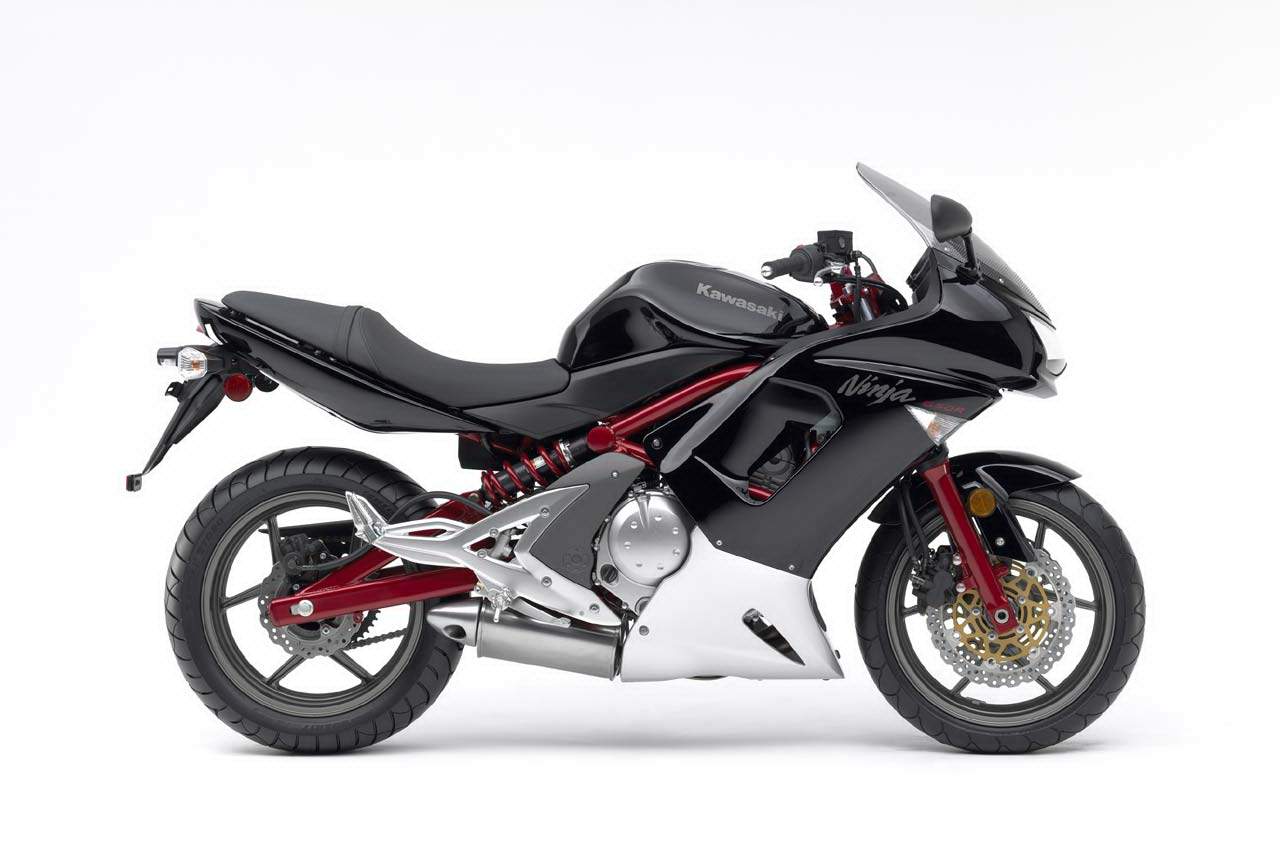
|
|
|
|
|
|
Classic Bikes
Custom Bikes
Individual
Racing Bikes AJP
AJS
Aprilia
Ariel
Avinton / Wakan
Bajaj
Benelli
Beta
Bimota
BMW
Brough Superior
BRP Cam-Am
BSA
Buell / EBR
Bultaco
Cagiva
Campagna
CCM
CF Moto
Combat Motors
Derbi
Deus
Ducati
Excelsior
GASGAS
Ghezzi Brian
Gilera
GIMA
Harley Davidson
Hero
Highland
Honda
Horex
Husaberg
Husqvarna
Hyosung
Indian
Jawa
Kawasaki
KTM
KYMCO
Laverda
Lazareth
Magni
Maico
Mash
Matchless
Mondial
Moto Guzzi
Moto Morini
MV Agusta
MZ / MuZ
NCR
Norton
NSU
Paton
Peugeot
Piaggio
Revival Cycles
Roland Sands
Royal Enfield
Sachs
Sherco
Sunbeam
Suzuki
SWM
SYM
Triumph
TVS
Ural
Velocette
Vespa
Victory
Vincent
VOR
Voxan
Vyrus
Walt Siegl
Walz
Wrenchmonkees
Wunderlich
XTR / Radical
Yamaha
Zero
Video
Technical
Complete Manufacturer List
|
Kawasaki Ninja 650R
KAWASAKI NINJA® 650R BRINGS REAL WORLD PERFORMANCE TO BOTH THE TWISTIES AND MORNING COMMUTE Powerful 650 is efficient and easy to ride With a unique look and feel, the 2007 Kawasaki Ninja® 650R delivers cutting edge design and astonishing versatility. This is a motorcycle that excels in real world riding. With a comfortable seating position and sportbike performance levels, the Ninja 650R is well-suited for freeway commutes, around town errands and weekend track days. Look at Kawasaki Ninja 650R sportbike and the first impression is one of pure design appreciation. Look a little longer and many of the innovative engine and chassis elements begin to come into play. However, the entire package doesn’t truly project its intended engineering outcome until the motorcycle is viewed with a rider seemingly melded into its unique posture. Because the 650R was meant to have broad rider appeal, Kawasaki’s development team began its task with the rider – not the motorcycle. After studying every kind of rider, and all types of riding, Kawasaki’s engineers focused on the human-machine interface. Different riding positions were examined to discover which instilled the most confidence. Narrowing the distance between the footpegs and striving for a lower seat height and low effort controls all played into the design effort. The compact liquid-cooled, fuel-injected, DOHC, 8-valve 649cc parallel twin engine delivers a smooth responsiveness that is tuned for rider-friendly power characteristics – especially in the low and medium rpm ranges. It is a power delivery that will inspire confidence in new motorcyclists. Its excellent mid-range characteristics will make the 650R a natural in commuting environments, and slipping in and out of traffic will be a cinch thanks to its lightweight trellis frame and responsive steering. The 650R’s engine may be tuned for manageable power delivery, but it also has outstanding roll-on response when making a highway pass and more than enough power to make it an entertaining trackday companion. Kawasaki engineers called on their vast experience building Ninja supersport machines to develop a motorcycle possessing performance characteristics that will be a match for anything currently available in the middleweight arena, including those with larger displacement. Ultimately, this exceptionally well-proportioned Ninja 650R represents a genre of motorcycle which is at home with both novice and experienced riders – and one that will be seen equally in daily midtown commuting situations as well as back-road-blasting on the weekends. FEATURES: Unique features Engine Liquid Cooling Digital Fuel Injection Digital Capacitor Discharge Ignition
(CDI) System Six-Speed Transmission Trellis Frame Single-shock Rear Suspension Triple Petal Design Brake Discs Six-spoke wheels Confidence-Inspiring Cockpit Bodywork  Review
Story by: Gabe Ets-Hokin, Feature Editor, January 2006
Completely revamped for 2003, the SV650S is an awful lot of
motorcycle for $6,449. It uses the same basic formula that was so successful in
1999 with just enough tweaks to keep it fresh and modern. SourceMotorcycle.com
|
|
|
Any corrections or more information on these motorcycles will be kindly appreciated. |